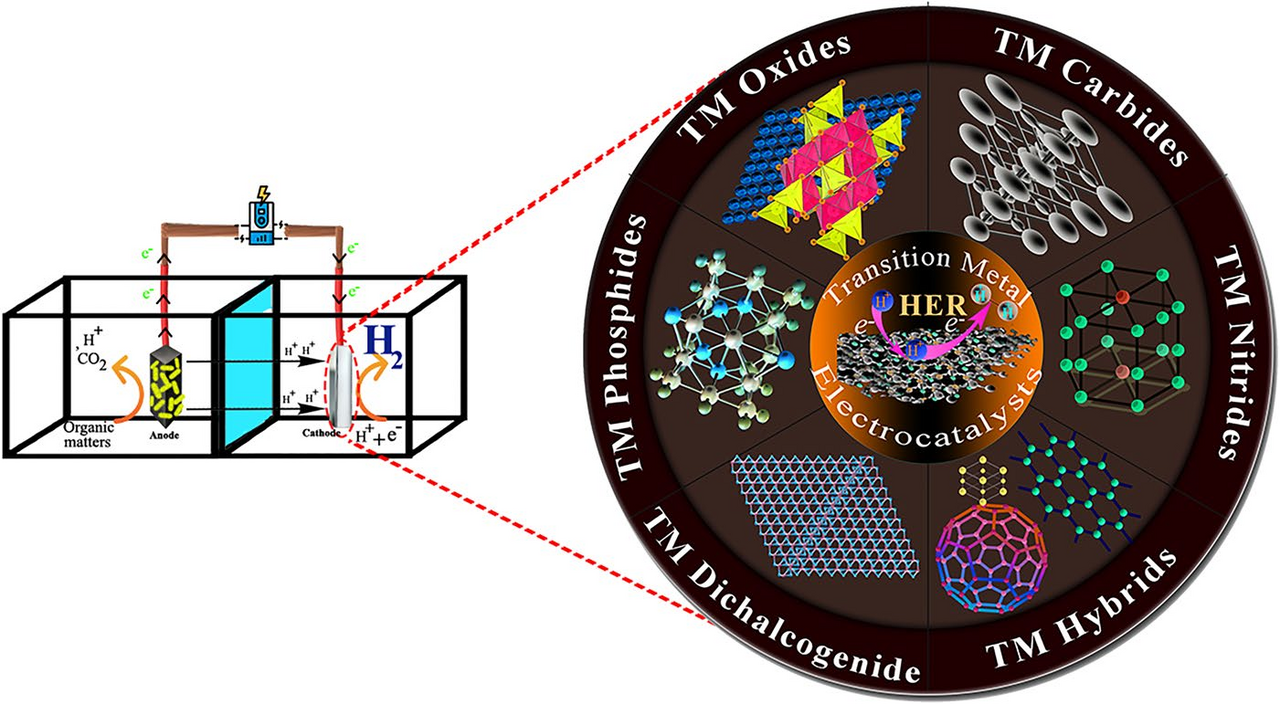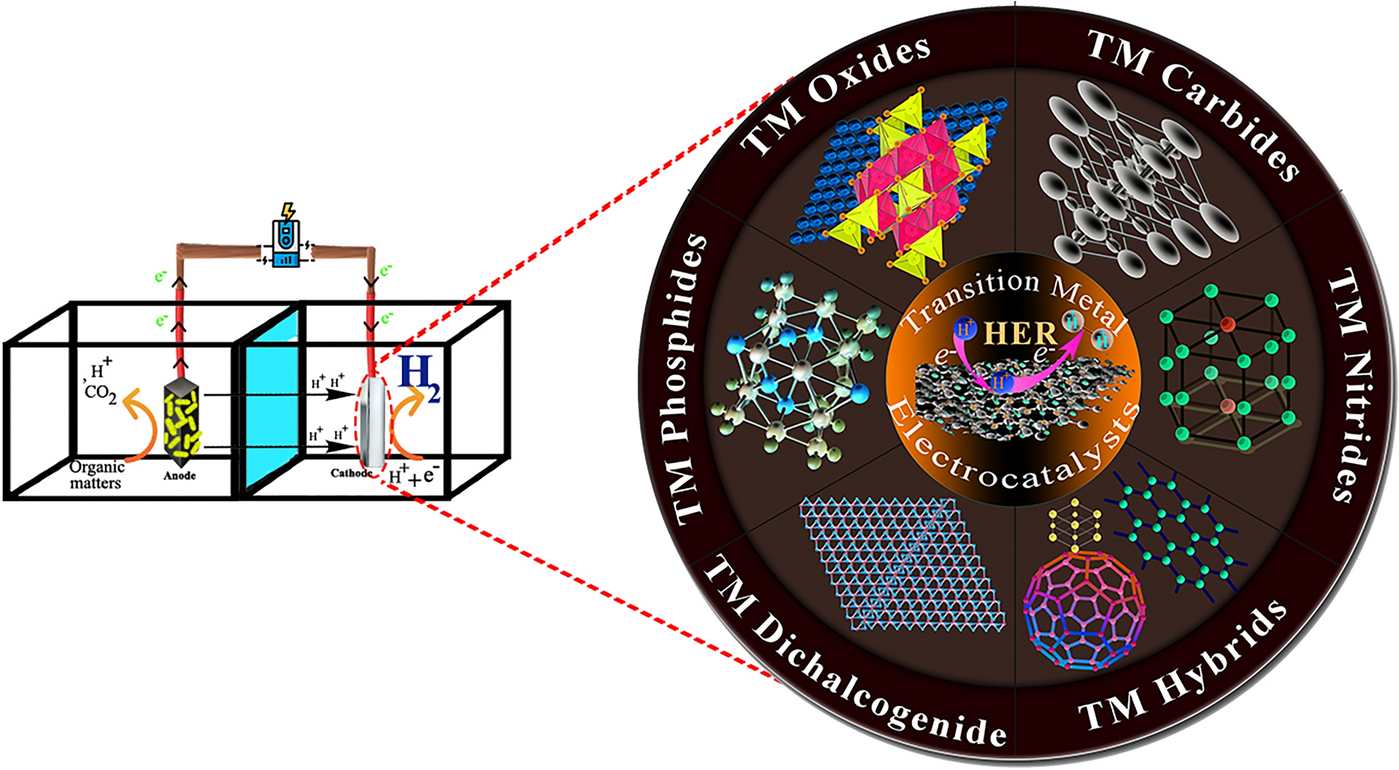15 Years of Progress on Transition Metal-Based Electrocatalysts for Microbial Electrochemical Hydrogen Production: From Nanoscale Design to Macroscale Application

A research team led by Professor Bing-Jie Ni (University of New South Wales) and Professor Wenshan Guo (University of Technology Sydney) has published a comprehensive review in Nano-Micro Letters, summarizing fifteen years of progress on transition metal (TM)-based electrocatalysts for microbial electrochemical cells (MECs). This work systematically traces developments from nanoscale catalyst design to macroscale applications, offering a roadmap for advancing practical and sustainable microbial electrochemical hydrogen production.
Why This Review Matters
- Catalyst Development Roadmap: The article highlights the evolution of TM-based electrocatalysts—including oxides, dichalcogenides, phosphides, carbides, nitrides, and hybrids—demonstrating advantages over noble metals and carbon-based systems.
- Performance and Cost Balance: TM catalysts combine high activity, durability, and biocompatibility with abundance and low cost, directly addressing barriers to large-scale MEC adoption.
- Scalability and Sustainability: By assessing techno-economic feasibility, life cycle impacts, and pilot-scale demonstrations, the review connects laboratory advances with industrial hydrogen production prospects.
Design Strategies and Mechanisms
- Active Site Engineering: Techniques such as heteroatom doping, surface activation, and bandgap modulation reduce energy barriers and accelerate HER kinetics.
- Hybrid Structures: Transition metals integrated with conductive carbons or alloy frameworks leverage synergistic effects to enhance stability and current density.
- Macro-to-Micro Integration: The review emphasizes bridging synthesis design with real-world system requirements to ensure MEC applicability.
Mechanistic and Computational Insights
- Reaction Kinetics: TM-based catalysts effectively reduce the Gibbs free energy of hydrogen intermediates, enabling faster HER processes.
- Modeling and AI: Density functional theory, microkinetic modeling, and physics-informed machine learning are highlighted as transformative tools for accelerating catalyst discovery and optimization.
Applications and Future Outlook
- Pilot-Scale Demonstrations: MECs with TM catalysts have shown improved hydrogen yields and economic feasibility in real wastewater treatment scenarios.
- AI-Driven Design: Data-driven strategies are expected to guide scalable synthesis and predict optimal catalyst compositions.
- Commercial Prospects: The integration of TM catalysts with techno-economic and environmental models provides a clear pathway toward industrial deployment of MEC-based hydrogen production.
By linking material innovation, mechanistic understanding, and application at scale, this review positions transition metal-based catalysts as a cornerstone for sustainable hydrogen technologies.
Stay tuned for more pioneering research from Professors Bing-Jie Ni, Wenshan Guo, and collaborators as they continue advancing microbial electrochemical systems for a green energy future.
Follow the Topic
-
Nano-Micro Letters

Nano-Micro Letters is a peer-reviewed, international, interdisciplinary and open-access journal that focus on science, experiments, engineering, technologies and applications of nano- or microscale structure and system in physics, chemistry, biology, material science, and pharmacy.






Please sign in or register for FREE
If you are a registered user on Research Communities by Springer Nature, please sign in